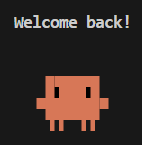前言
上一次鸿小易的开发整体都是属于对于第一个完整项目的探索心态去做的,模仿着子安学长曾经的代码规范去照猫画虎,而现在完全不一样了,我在经历了NowInOpenHarmony项目的开发之后,我现在对于整体代码的规范性,以及鸿蒙一多的三层架构的作用和应当拥有的一些基础功能都有了一定的了解。
基础功能迁移
API升级
当下鸿蒙6已经公测,我们也没有理由再用我们原本的API15去继续开发了,我们就直接干到最新的API20就好了。
三模块创建与依赖关系建立
这里就没什么好说的就直接创建动态资源共享包之后,再将我们的entry模块改名为product,最后再在feature和product的oh-package.json5中的”dependencies”字段中去添加我们的包路径并自动执行ohpm install命令就好。
1
2
3
4
5
6
7
8
9
10
11
12
| {
"name": "feature",
"version": "1.0.0",
"description": "Please describe the basic information.",
"main": "Index.ets",
"author": "",
"license": "Apache-2.0",
"packageType": "InterfaceHar",
"dependencies": {
"common": "file:../common"
}
}
|
类似如此,也是简单的给我自己留个档,以后开发好找。
日志工具迁移
Logger日志工具这属于是我们更古不变的东西了,每个开发者都应该是有这样一套日志工具的,标志着自己的识别码、负责的业务功能分区识别码等。这里我们直接复制过去就行。
1
2
3
4
5
6
7
8
9
10
11
12
13
14
15
16
17
18
19
20
21
22
23
24
25
26
27
28
29
30
31
32
33
34
35
36
37
| import { hilog } from '@kit.PerformanceAnalysisKit'
import { LOGGER_TAG } from '../../modules/enums'
class Logger{
private domain:number
private tag:string
private format:string = '%{public}s'
constructor(domain: number = 0x0000, tag: string = '') {
this.domain = domain
this.tag = tag
}
debug(args: string): void {
hilog.debug(this.domain, this.tag, this.format, args);
}
info(args: string): void {
hilog.info(this.domain, this.tag, this.format, args);
}
warn(args: string): void {
hilog.warn(this.domain, this.tag, this.format, args);
}
error(args: string): void {
hilog.error(this.domain, this.tag, this.format, args);
}
}
export const logger:Logger = new Logger(0x1234,LOGGER_TAG.XBX_LOGGER_TAG)
|
从这里的话其实也可以看出我们相比于上一次开发鸿小易的时候,也进行了一些改进,我将“XBXyftx”的这个log tag给封装到了一个枚举类中,对于这个项目我们虽然大概率只是我一个人的的工作,但还有可能会有我团队的其他人的加入,再加入新人在之后我们就可以将他们的tag去添加到LOGGER_TAG这个枚举类型中去进行统一的管理。
版权声明: 此文章版权归XBXyftx所有,如有转载,请註明来自原作者








